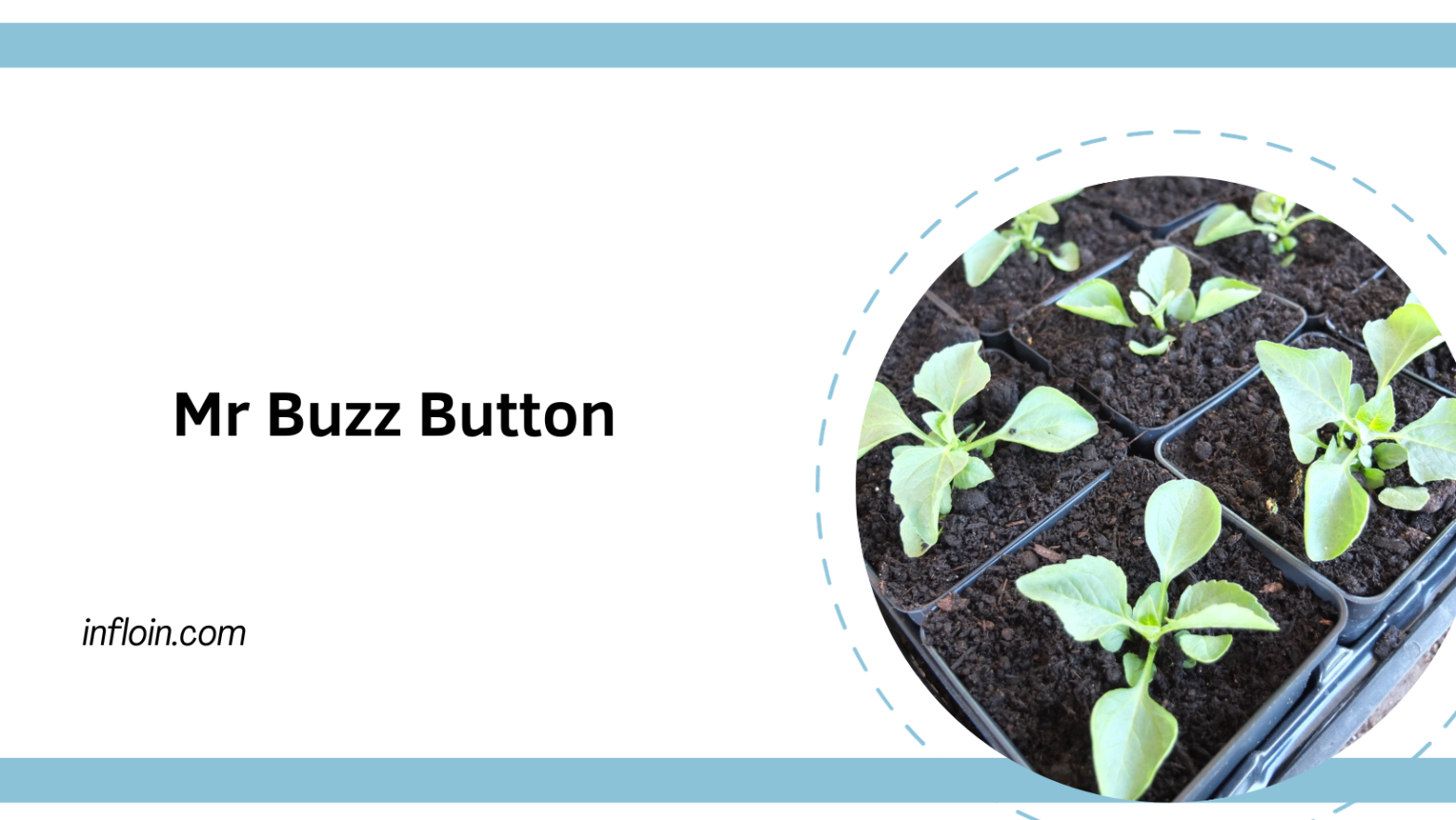Buzz buttons are a unique mixology ingredient designed to excite and awaken the palate, heightening flavor in both drinks and dishes. Their bright yellow hue boasts grassy notes with subtly citrussy undertones.
As it floats on top of a drink, its tingling sensation evokes memories of eating Pop Rocks. Additionally, these particles can also be mixed into oils, syrups and alcohol products to give an exciting mouthfeel experience.
Table of Contents
What is a Buzz Button?
Acmella oleracea, commonly referred to as buzz button, Szechuan button or electric daisy is a plant known for producing small yellow flower buds that provide natural analgesia and antibacterial protection. Culinary professionals commonly utilize its ability to awaken palates and heighten flavors in both sweet and savory dishes and drinks alike – using whole flowers as garnish can add an exciting, mouth-tingling acupuncture-like experience for guests!
Flowers add an unusual, fun flair to cocktails and food alike; not only are they beautiful to look at but they have an extremely mild grassy and citrus flavor, too. When eaten they stimulate saliva production while releasing analgesic compounds such as spilanthol into your mouth that cause that familiar tingle like bubbles in a carbonated beverage!
Consuming a buzz button typically lasts one to 10 minutes and increases as you chew more of them. The effects are caused by chemical spilanthol in its soft tissue and shouldn’t cause harm, though they may be very strange for unsuspecting cocktail or food lovers.
TGI Fridays first featured golden flower buds as part of its Blackberry Buzz ‘Rita in spring 2018, and the trend has spread through menus around the country ever since. At the Cosmopolitan in Las Vegas’ Chandelier Lounge is even serving a Alice-inspired drink called We’re All Mad Here made with Empress Indigo Gin, Soho Lychee Liqueur, St Germain Liqueur, lemon juice and Chardonnay Cardamom Ginger Syrup with a whole Buddha button as garnish!
How to Eat a Buzz Button
Buzz buttons (Acmella oleracea) might not look impressive, but when chewed they’ll send your tastebuds reeling! That’s because these flowers contain spilanthol – similar to the mouth-numbing compound found in Sichuan peppercorns – which produces an exhilarating tingling sensation in all areas of your mouth – making this flower so attractive to chefs and mixologists.
Add these flowers to beverages to amplify and elevate their flavors while providing guests with a unique interactive experience. They pair particularly well with citruses such as lemon, lime and grapefruit as well as ginger, agave, cucumbers and garlic; spring vegetables such as peas and fava beans make an ideal pairing as do infusing these flowers into oils, syrups or alcohols for maximum tingle effect!
Grated or mushed flowers can be used as cocktail garnishes by floating them on top of drinks or skewered onto glasses as decoration. When served this way, chew on it for several seconds to feel its tingling effect and enjoy its unique flavors!
Tingling will last only for a few minutes and the flower can be added to any type of drink; for example, at Park Hyatt Washington’s Blue Duck Lounge they serve a Spilanthe-infused cocktail called the Witchdoctor ($10) made up of chamomile whiskey, red pepper-infused Calvados, yuzu juice, hibiscus syrup and a Buddha button.
Buzz Button Recipes
Szechuan button (Acmella Oleracea) flowers create an intoxicating bubbly sensation similar to Champagne when chewed, creating an electrifying experience on your tongue, like something out of Willy Wonka’s lab. Also referred to as toothache plants or electric daisies, these edible blooms possess grassy flavors with slightly tart notes similar to Pop Rocks candy for an electrifying chew experience on your tongue.
Restaurants are increasingly adding buzz buttons to their menus and cocktail lists as a fun way to create a sensory experience for customers. These tiny flowers can be added whole or crushed as part of drinks, garnishes or culinary dishes; their crushing releases spilanthol into your mouth which alters taste buds’ perception of flavors allowing it to pick up on more subtleties, layers, or ingredients in drinks, according to Atlas Obscura.
Szechuan button flowers pair well with citrus fruits, teas (particularly lemongrass and ginger varieties), honey, springtime vegetables such as peas and fava beans as well as drinks, salads, grilled dishes desserts and vinaigrettes. Their intensity will depend on how many Szechuan buttons are consumed; increasing this effect by crushing or blending flowers with oil, syrups or liquids such as vinaigrette is possible.
Queen Bee’s Verbana from Chandelier Bar at The Cosmopolitan of Las Vegas is one of the more notable cocktails featuring this new-fangled ingredient, boasting Empress Indigo gin, Soho lychee, St. Germain and H20Apple rosewater as its base ingredients; garnishing this beverage is buzz buttons ground up into ground leather, spilanthol extract pear and ginger garnish which should be eaten to reap its effects.
Buzz Button FAQ
Buzz buttons may not be found at your grocery store, but they’re easy to grow yourself at home. As part of the Asteraceae family – related to asters and daisies – these flowers make up annuals in zones 9B-11, perennials everywhere else and require 8 to 12 hours of sunlight daily to thrive. As root rot can occur with this species of flowering plant, be sure to provide proper drainage; mulch the area around your plants to maintain moisture while inhibiting weeds.
Seeds should be planted outside once all threat of frost has passed or indoors six weeks prior. Space them out approximately 2 to 3 inches apart on a seed tray or potting mix and water regularly so the soil stays moist without becoming soggy.
Buzz button flowers are well known for the electrifying jolt they give when eaten, thanks to spilanthol, an analgesic agent with antifungal and antimalarial properties found within them. This stimulates your salivary glands, in turn activating taste buds to elevate any dish with which you eat them.


